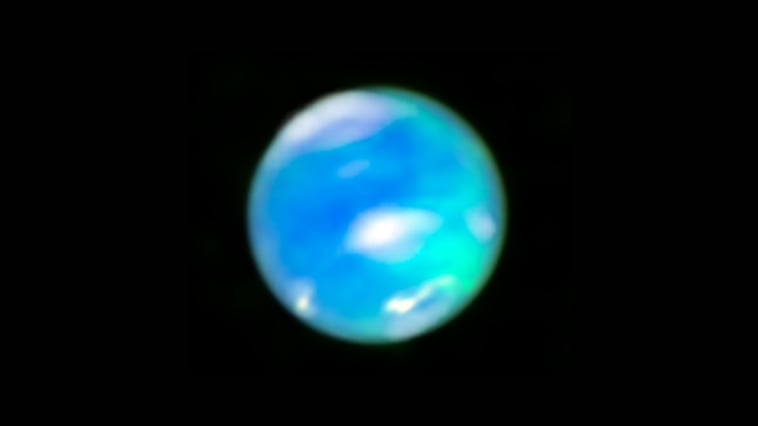
In a groundbreaking achievement, NASA’s James Webb Space Telescope (JWST) has captured unprecedented images of Neptune’s aurorae, shedding new light on the mysterious ice giant. These observations provide invaluable insights into Neptune’s atmospheric dynamics, magnetic field, and its interaction with solar particles.
A New Glimpse into Neptune’s Atmosphere
Neptune, the eighth and farthest planet from the Sun, has long intrigued astronomers with its dynamic atmosphere and complex magnetic field. Previous missions, including NASA’s Voyager 2 flyby in 1989, offered fleeting glimpses of this distant world. However, the JWST’s recent observations mark a significant advancement in our understanding of Neptune’s atmospheric phenomena.
Unveiling the Aurorae
Aurorae occur when energetic particles, often from the Sun, become trapped in a planet’s magnetic field and collide with molecules in the upper atmosphere, emitting light. On Earth, these mesmerizing displays are typically confined to polar regions. However, Neptune’s aurorae present a unique twist. Unlike Earth, where aurorae are seen near the poles, Neptune’s aurorae are located at mid-latitudes, likely due to its unusual magnetic field.
The Role of JWST
The JWST’s Near-Infrared Spectrograph (NIRSpec) played a pivotal role in these observations. Its sensitivity allowed scientists to detect the trihydrogen cation (H₃⁺), a molecule associated with auroral activity. This detection not only confirms the presence of aurorae but also provides insights into the composition and temperature of Neptune’s upper atmosphere.

Temperature Variations and Atmospheric Cooling
One of the surprising findings from the JWST observations (and earlier observations) is the significant cooling of Neptune’s upper atmosphere since the 1980s. Temperatures have dropped by several hundred degrees, resulting in dimmer aurorae. This cooling trend may explain why auroral activity remained undetected for so long and suggests that Neptune’s atmosphere is more dynamic than previously thought.
Collaborative Imaging Efforts
To provide a comprehensive view of Neptune’s aurorae, scientists combined data from both the JWST and the Hubble Space Telescope. This collaboration resulted in enhanced images where the auroral activity appears as cyan splotches, overlaid on Hubble’s visible-light images. These composite images offer a more detailed understanding of the spatial distribution and intensity of the aurorae.
Implications for Planetary Science
The JWST’s observations of Neptune’s aurorae have far-reaching implications. They provide a deeper understanding of how the planet’s magnetic field interacts with solar wind, contributing to the broader study of planetary magnetospheres. Furthermore, these findings underscore the importance of infrared observations in detecting and analyzing atmospheric phenomena on distant planets.
Astronomers aim to monitor Neptune over a full solar cycle, approximately 11 years, to observe how its auroral activity evolves with changes in solar activity. Such long-term studies could unveil more about the underlying mechanisms driving these phenomena and offer comparisons with auroral processes on other planets, including Earth.
The JWST’s recent imaging of Neptune’s aurorae marks a significant milestone in planetary science. By providing detailed observations of these elusive phenomena, the telescope has opened new avenues for understanding the complex interactions between solar particles and planetary atmospheres. As we continue to explore our solar system, such discoveries remind us of the intricate and dynamic nature of the planets that share our cosmic neighborhood.
Clear skies!


